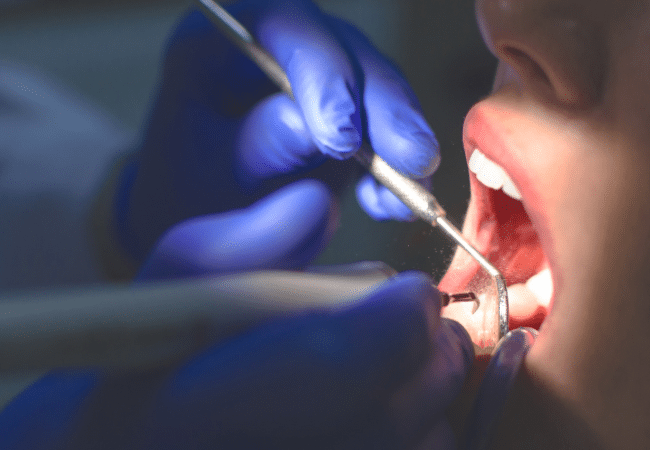Complications of T1D: gum disease

When you’re living with type 1 diabetes (T1D), one health complication that might not be on your radar is your smile. But good oral health is especially important for people with T1D.
That’s because the extra glucose in your blood can sometimes have an effect on your oral health, which can increase your risk of gum disease, tooth decay, and even tooth loss.
With a good dental routine, you’ll be in a good position to keep your teeth strong and your gums healthy.
What causes gum disease in people with T1D?
People with diabetes are more likely to develop gum disease because they may have higher blood glucose levels than others. Too much glucose in your blood can enter your saliva, creating a warm and welcoming environment that germs and plaque love. This can irritate and weaken your gums, leading to tooth decay and gum disease.
Diabetes can also lead to a lack of collagen on the gum tissue and poor blood circulation in the gums, which can also create a problem.
What are the symptoms?
Look out for signs of gum disease, such as:
- bleeding gums
- bad breath
- soreness in the mouth
- gum recession, which can make your teeth look longer or create bigger gaps between them.
If you notice any of these symptoms, have them checked by your dentist as soon as possible. Early treatment can stop more serious problems from developing.
What checks should be done?
Try to find a dentist you like and stick with them, aiming to visit every six months. Regular check-ups with the same dentist will let them keep an eye on the health of your mouth and gums closely and to notice if something changes.
If you notice any signs of gum disease in between visits, try to see your dentist as soon as possible. The earlier you catch any problems, the easier treatment can be, and you’re more likely to keep all your teeth.
What are the treatments for gum disease?
The treatment for diabetes-related gum disease depends on how severe it is, but your options can include:
- deep cleaning under the gums
- antibiotics to treat infections
- removing a problem tooth
- gum surgery for more severe cases.
How can I reduce my risk of gum disease?
You can reduce your risk of gum disease by maintaining good dental hygiene and keeping your blood glucose levels within your target range. Tips for keeping your mouth healthy include:
- brushing your teeth twice a day
- flossing daily
- visiting your dentist every six months
- quitting smoking, if you’re a smoker.
Where to go for more support
If you experience any symptoms of gum disease, or if you’re concerned about your oral healthcare regiment, see your dentist. Regular dental check-ups and good oral hygiene practices are your best bet when it comes to preventing serious complications and keeping that smile healthy.
Read about more T1D complications and how to prevent, recognise and treat them:
